It’s been a roller coaster for the catering and events industry over the past two years. Caterers watched as events disappeared off their calendars while being forced to lay off their staff in 2020, only to be faced with a record-setting number of events just two years later without enough employees to staff them. The economy surged in 2022…until it didn’t. With so many ups and downs, starts and stops, it’s been a challenge for caterers to get their footing. But as everyone knows, caterers are experts at finding innovative ways to solve any problem.
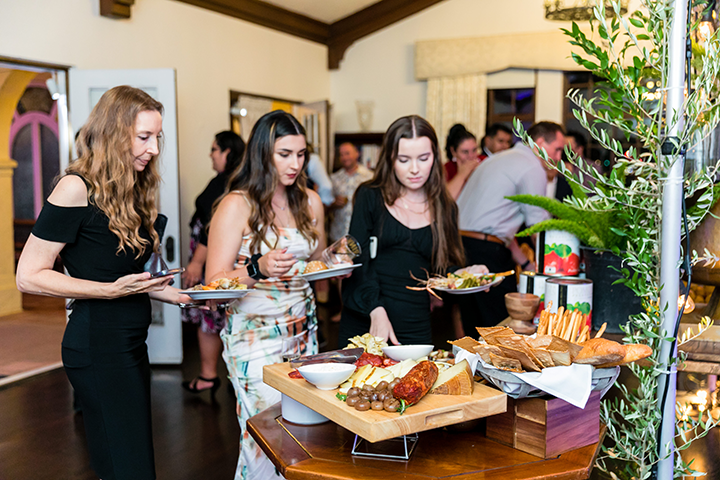
Colette's Catering & Events showcases their Antipasto grazing station. Photo courtesy BYC Photography
“Our industry has worked tirelessly to rise above every challenge thrown our way by the skin of our teeth,” says Steve Sanchez (JDK Group). “We’ve proven that our kind, catering professionals, are resilient, creative, and innate problem solvers. It is evident that when our industry comes together, we pull through.”
Survey says
Earlier in the third quarter, Catersource released a survey to our readership. Surveys are always a good place to start an end of the year report. Let’s first look at a few of the simple questions we asked, and some of the interesting responses we received, and then we will move into the guts of the beast—our annual SOI (as we call it in house): the Catersource State of the Industry 2022.
Who responded to our survey?
- 47% described their company as a caterer.
- 43% identified as Owner/CEO;
- 15% as operations (manager, director, or executive).
Interestingly, 22% noted that they have been in the events industry for 10–19 years, 29% have been in the industry for 20–29 years, and an impressive 32% have worked in the industry for more than 30 years.
Top event types
In a “select all that apply” style question, the top event types were “corporate” with 77% of all companies winning some type of contract from a corporation in 2022, and in a close second were social events (Bar/Bat Mitzvahs, Quinceañeras, birthdays, and anniversaries, etc.) with 74% followed by weddings (66%). Association events (59%) came next with fundraisers (56%) rounding it out.
The ambiguous category of “other” which included fill-ins such as festivals, memorials/funerals, culinary trainings, retirements, institutional, student banquets, executive dinners, customer appreciation, concessions/vending, academic/school, concerts, sporting events, military protocols, golf outings, team building, film and television, and conventions brought up the tail at 25%.
“In the past a lot of catering companies just focused on the corporate side, but the pandemic made them pivot to the social side as well,” says Clint Elkins (SB Value).
The most popular size for a catering job is 1–99 (71%) with 100–249 (68%) coming in a close second.
Pre- versus post-COVID event numbers
While word on the street says that many event and catering pros are far busier than they were pre-COVID, the survey said otherwise. Pre-COVID, 31.74% selected 250 events or more as their top number contracted. In our post-COVID survey, however, 27.65% selected 250 or more events and 1–49 events took the top spot with 30.72%. Interestingly though, Post-COVID saw the same response for 1–49 with 30.72%, responses for 50-99 events stayed fairly stagnant pre- (17.75%) and post-COVID (18.43%). There was an increase for 100-249 events pre-(19.80%) and post-COVID (23.21%).
Let’s talk content
Finally, we asked what types of content our readership is most interested in devouring. The biggest surprise was that safety and security was the least interesting of the 11 selections we offered.
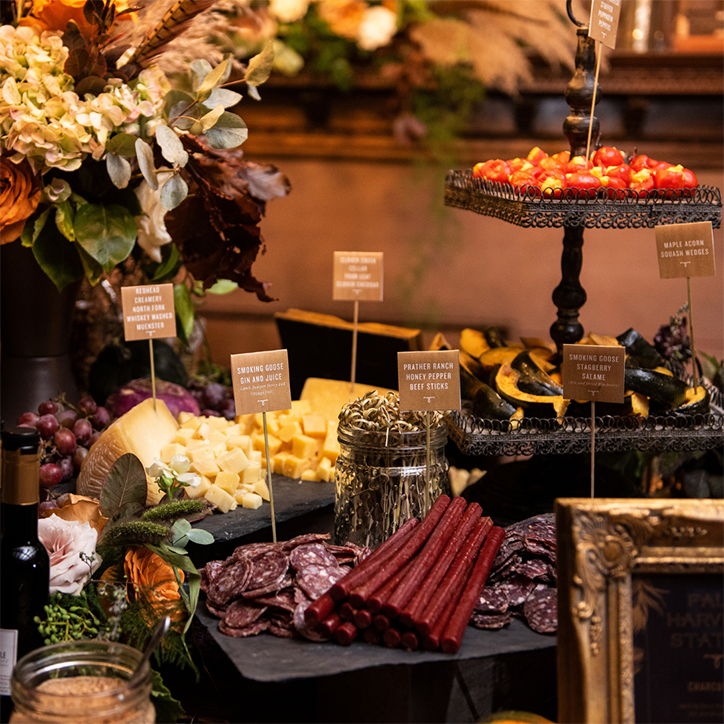
Grazing stations continued to be popular throughout 2022. Shown: a Fall Grazing Station from the jdk group. Photo courtesy Mark Buckwalter Photography
What you want to know more about, however, are food and beverage trends, best practices, event trends, menu development, and business and professional development. We’ll do our best to cover all of these in upcoming months through the pages of Catersource magazine, via our website, and through our live content at Catersource Conference & Tradeshow in March 2023.
A wedding boom
If anything could be used to describe 2022, it’s that it was the year of the wedding boom. All year long, 2022 has been projected to see the largest number of weddings since 1984. In a webinar earlier this year with the International Caterers Association, Lee Ann Kelly with American Metalcraft suggested that there could be as many as 2.5 million weddings (1 billion meals served) in 2022 due to the number of weddings that were postponed in 2020 and 2021, combined with the number of new couples looking to tie the knot.
“The industry is healthy, busy, and exciting,” says Robin Selden, executive chef for Marcia Selden Catering & Events. “We are turning business away as we are having to close dates as not to compromise the quality of the events potentially by getting too hungry and taking on too much.”
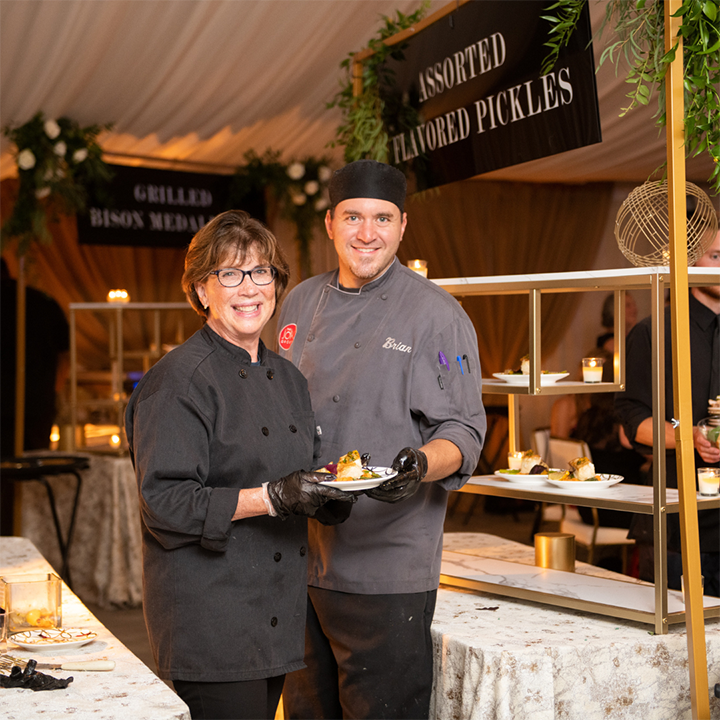
Chef Tendered Short Plate Station from the JDK Group. Photo Courtesy Mark Buckwalter Photography
In 2022 the catering industry saw a revenue of $10.6 billion, according to IBISWorld and is expected to see an 11.4% increase as we move into 2023.
2022 saw the re-emergence of action stations, grazing tables, family-style, serve-yourself buffets, and guest experiences after two years of traditional plated meals and staff-attended buffets as a safety-precaution against the spread of the COVID-19 virus.
“Chef attended action stations are really coming back full force,” said Jason Sutton (Footers Catering) during a Chef Roundtable earlier this year with the ICA, “and that also allows us to bring back all of the theatrics.”
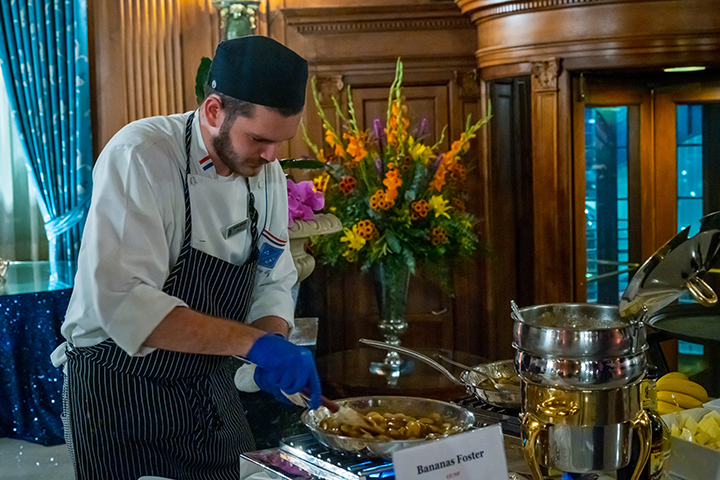
2022 saw the re-emergence of chef-attended action stations. (above) bananas foster chef station during back to the club at the detroit athletic club. Photo courtesy doug coombe
Sanchez agrees. “I have noticed that creative and interactive stations are back on the rise,” he says. “Creating an environment where guests can connect with their food on an experiential level is becoming an important factor for many clients. "From elevated, over-the-top grazing displays to interactive chef-tendered stations with entertainment elements of live flame, theatrical characters, and choreographed meal service–clients are looking to wow their guests with unique culinary experiences.”
How tastings are handled has also taken on a bit of a different look. Pre-pandemic, couples would set up private tastings where they could sample their way through a caterer’s menu to get a first-hand account of what their guests will experience should they decide to sign on the dotted line. During the pandemic, tastings became more “grab-and-go" where couples would pick up a boxed version of their tasting menu, bring it home, and in some cases would have to reheat it and plate it themselves (with instructions from the caterer). Post-pandemic, however, is something entirely different. First, some caterers have a limited number of private tastings they offer per month because of their busy schedules, so it’s in the best interest of the couples to start looking for their caterer earlier rather than later.
“It’s a real challenge right now because we’re busy,” said Karen O’Connor (Daniel et Daniel) during the Chef Roundtable.
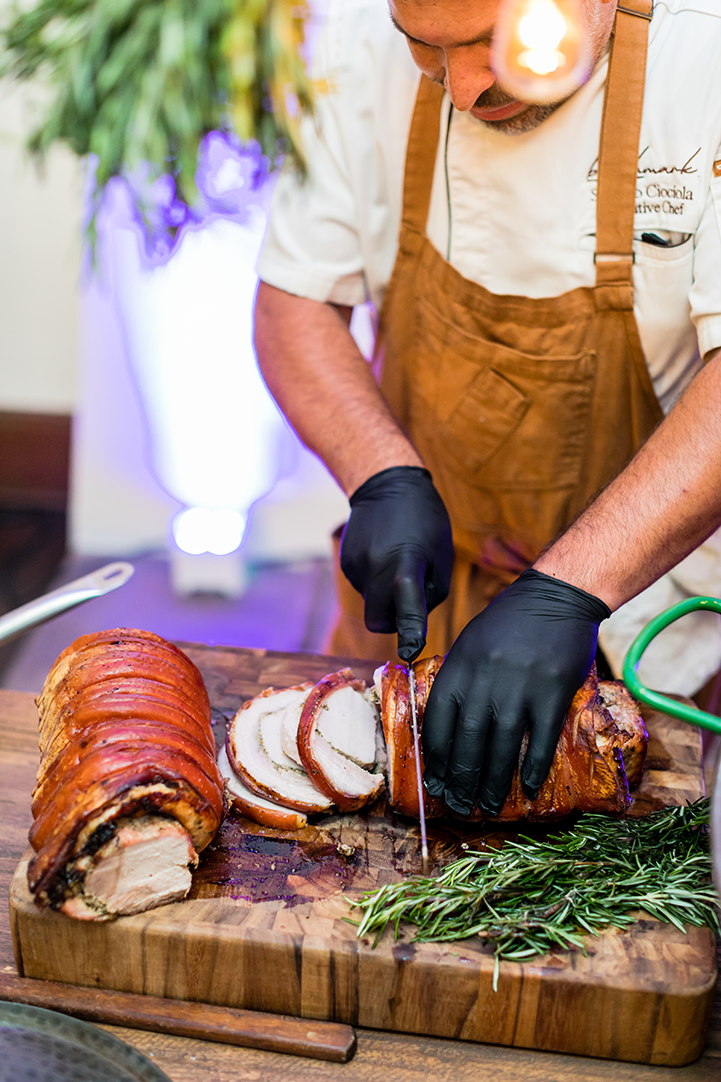
Executive Chef Stefano Ciociola of Colette's Catering & Events slices Porchetta to order. photo courtesy byc photography
Whether or not to charge for a private tasting is a constant discussion among caterers as they’re constantly weighing the return on investment: do they see a contract signed when offering a tasting? If it’s a small guest list, does it make sense to cover the cost of a tasting?
A new type of tasting has started to emerge in the form of group tastings to scale back on the number of private tastings. For the group tastings, caterers will host a formalized event (for a fee) for multiple couples where they can sample several different menu options, while also getting to experience table settings, service, linens, and other décor elements to illustrate the full experience a caterer can provide.
“It's the whole package,” said Jay Varga (JDK Group) during the Chef Roundtable, “and its more cost-effective.”
“What we’ve noticed is that there’s a lot of people who just need a little bit of direction and don’t really know what they need,” Sutton said during the Chef Roundtable, “so they don’t necessarily need a tasting, they just need to figure out what food is and how to organize a menu. By doing a group tasting, this’ll hopefully weed out some of the tastings we don’t need to be doing.”
Check back next week Part 2 of our State of the Industry Report where we'll take a look at corporate catering.



